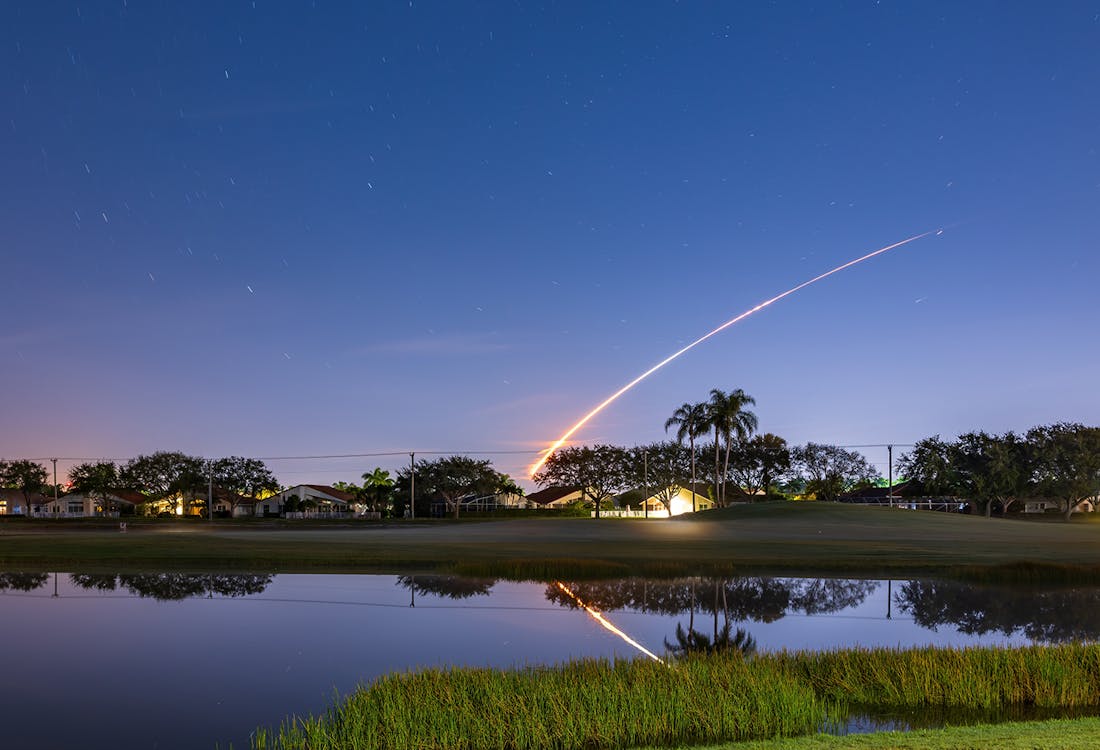Top Kennedy Space Center missions
Where dreams take flight and the cosmos is the playground, the Kennedy Space Center truly is the launchpad of imagination. From Apollo’s success stories to the tragedy of the Columbia spaceship, KSC is not just a facility. The heartbeat of space exploration and high-octane missions launched, here are the top Kennedy Space Centre missions that have left a stellar trail of discoveries, adventures, and hope for a boundless tomorrow, beyond what we know and see.
1. Apollo 11
The first mission to land humans on the Moon, Apollo 11 launched from Kennedy Space Center on July 16, 1969, carrying astronauts Neil Armstrong, Buzz Aldrin, and Michael Collins. It marked a significant milestone as Armstrong and Aldrin became the first humans to step on the Moon on July 20, while Collins orbited above. Their mission was “a giant leap for mankind” and was a remarkable technical achievement that led to multiple scientific experiments being conducted on the lunar surface. It even brought back Moon rocks for further study, which can be seen at the Kennedy Space Centre today!

2. Hubble Telescope Launch
Launched on April 24, 1990, from Kennedy Space Center aboard Space Shuttle Discovery, the Hubble Space Telescope has been pivotal in advancing astronomical research. Orbiting Earth, it captures high-resolution images of the cosmos, aiding in discoveries like determining the rate of expansion of the Universe, exploring distant galaxies, and observing planetary formations. All the information we have about Black Holes and exoplanets? You can thank the Hubble mission with Edwin Powell Hubble for initiating!

3. Columbia STS-1
Space Shuttle Columbia STS-1, launched from Kennedy Space Center on April 12, 1981, was the inaugural mission of NASA's Space Shuttle program. Astronauts John Young and Robert Crippen piloted the orbiter, testing the shuttle's systems and capabilities. The mission marked the first use of solid rocket boosters for American human spaceflight and initiated the era of reusable spacecraft, setting the stage for subsequent shuttle missions that contributed significantly to space exploration, science, and international cooperation1.

4. Columbia STS-9
From KSC, Space Shuttle Columbia's STS-9 mission debuted Spacelab, an onboard science lab, propelling space-based scientific research to new heights. The November 28, 1983 mission was piloted by astronauts John Young and Brewster Shaw, with four additional crew members. The onboard Spacelab, a joint effort between NASA and European Space Agency, housed over 70 experiments across various scientific disciplines setting a new standard for space-based research, enabling a deeper understanding of Earth and space phenomena1.

5. Columbia STS-107
While it was a glorious beginning for Columbia disaster occurred on February 1, 2003, during the re-entry phase of the STS-107 mission. The spaceship disintegrated over Texas, leading to the tragic loss of all seven crew members aboard. The root cause was traced back to a piece of foam insulation that broke off from the external fuel tank during launch, striking the shuttle's left wing and damaging its thermal protection system. This damage went undetected during the mission, but upon re-entry, the compromised wing structure couldn't withstand the extreme temperatures, causing the spacecraft to break apart. The disaster resulted in a 29-month suspension of the Space Shuttle program and triggered a re-evaluation of NASA's space shuttle safety procedures and policies. The mission was launched on January 16, and after months of investigation 85,000 pieces of debris were collected.

6. Apollo 8
Apollo 8, launched on December 21, 1968, with astronauts Frank Borman, James Lovell and William Anders on board. With several “firsts” to its name the mission which launched at th4e Kennedy Space Centre was the first manned spacecraft to leave Earth orbit, reach the Moon, orbit it, and return safely. During the mission, the crew photographed Earth and the lunar surface, providing iconic images of Earthrise over the Moon. Apollo 8 set the stage for subsequent lunar missions, demonstrating the capabilities required for human lunar exploration. It also delivered a memorable Christmas Eve broadcast, reading from the Book of Genesis, sharing a message of hope during a tumultuous year that included the assassination of Martin Luther King Jr, Robert Kennedy and saw an attack on US troops in Vietnam during the war.

7. Apollo 13
Apollo 13, launched on April 11, 1970, from Kennedy Space Center, is known for its successful failure. Yes, you read that right. An oxygen tank explosion en route to the Moon forced the crew to abort their lunar landing. Through remarkable ingenuity and teamwork, astronauts Jim Lovell, Jack Swigert, and Fred Haise safely returned to Earth on April 17. There is also a dramatised version of the incident. Watch Apollo 13 starring Tom Hanks, Kevin Bacon and Bill Paxton.

8. Apollo-Soyuz Test Project
Symbolizing the Cold War détente, this KSC-launched mission facilitated the first international human spaceflight, fostering US-USSR space cooperation. The Apollo-Soyuz Test Project (ASTP) of 1975 saw the first international docking of two spacecraft, the American Apollo and the Soviet Soyuz, led by Thomas Stafford (Apollo) and Alexei Leonov (Soyuz). The teams conducted joint scientific experiments, shared meals, and held press conferences in space, bridging political and language barriers.

9. Double Asteroid Redirection Test (DART)
DART took off from KSC in 2021, and aims to alter an asteroid's trajectory, a monumental step towards planetary defence against celestial threats. All those Marvel stories now have a real-life version thanks to this one! A SpaceX Falcon 9 rocket carried the DART spacecraft on a trajectory towards the binary asteroid system Didymos. The mission's goal is to deliberately crash DART into the smaller asteroid, Dimorphos, to alter its orbit in a measurable way. By doing so, DART aims to demonstrate the kinetic impactor technique, a method that could potentially be used to redirect hazardous asteroids away from Earth in the future. This mission is a crucial step in testing and validating technologies that could mitigate asteroid threats, ensuring the long-term safety of our planet. Avengers…assemble!

10. Falcon Heavy's Psyche Mission
Lift off happened on October 13, 2023 and is the latest launch from the Kennedy Space Centre. The Falcon Heavy's Psyche Mission, is all about a new age of space exploration partnerships between government and private entities. The mission, propelled by SpaceX's powerful Falcon Heavy rocket, aims to study a metal-rich asteroid named Psyche, believed to be the core of an early planet. By investigating Psyche's composition and nature, scientists aspire to delve deeper into understanding planetary formations.

Upcoming Launches from Kennedy Space Center
Other missions that are set to be launched from the Kennedy Space Centre are plenty. Here’s what to look out for!
- Artemis I: The first uncrewed test flight of the Space Launch System (SLS), the most powerful rocket ever built. Artemis I is scheduled to launch in 2023.
- Artemis II: The first crewed test flight of the SLS. Artemis II is scheduled to launch in 2024, and will orbit the Moon.
- Artemis III: The first mission to land humans on the Moon since Apollo 17, in 1972. Artemis III is scheduled to launch in 2025, and will land astronauts on the Moon's South Pole.
- Gateway: A small space station that will orbit the Moon. Gateway will be used as a staging point for missions to the Moon and Mars.
- Mars Sample Return Mission: A mission to bring samples of Martian rocks and soil back to Earth. The Mars Sample Return Mission is scheduled to launch in the 2030s.


